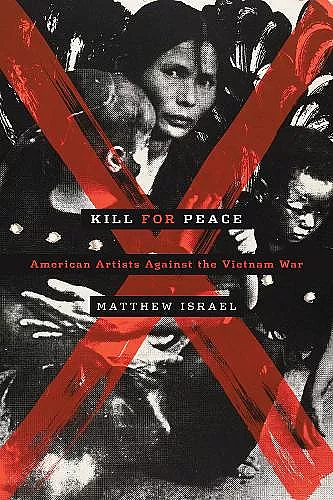Kill for Peace
American Artists Against the Vietnam War
Format:Paperback
Publisher:University of Texas Press
Published:15th Jul '13
Currently unavailable, and unfortunately no date known when it will be back

"The Vietnam War may seem long ago and far away to more recent generations, but it was not only a profoundly divisive and thereby defining event for many who came of age during it; it remains for Americans of all ages a nagging example of an inherently ill-conceived and unwinnable foreign adventure in the postcolonial era and an unhealed wound in the national psyche. More so than in any war before it, the cultural community as a whole and visual artists in particular responded by making work and organizing protests that raise countless questions about the moral obligations and political efficacy-or inefficacy-of artistic activism, as well as about the aesthetics of dissent. Speaking from the position of a scholar who came of age during another round of such misadventures-the wars in Iraq and Afghanistan-Matthew Israel closely examines the legacy of Vietnam War-era art with keen and fair-minded attention to its ideals, achievements, and failures. His is an indispensable book about a grim, much ignored chapter in the history of American art in the second half of the 20th century, a book about how 'then' contains lessons for 'now'-and for the future." -- Robert Storr, artist, critic, and Dean of the Yale School of Art "Israel's significant contribution lies in his extensive research and the way he contextualizes the art as it parallels the history of the Vietnam War. This is a smart way of analyzing the timeliness and effectiveness of antiwar art and has not been done at this length and depth... There is no other book that covers this territory anywhere as thoroughly. It will be very useful for teaching." -- Lucy R. Lippard, writer, activist, and author of A Different War
Surveying the major antiwar artists, art collectives,and iconic works, as well as offering an original typology of antiwar engagement, this is the first comprehensive history of American artistic protest against the Vietnam War
The Vietnam War (1964–1975) divided American society like no other war of the twentieth century, and some of the most memorable American art and art-related activism of the last fifty years protested U.S. involvement. At a time when Pop Art, Minimalism, and Conceptual Art dominated the American art world, individual artists and art collectives played a significant role in antiwar protest and inspired subsequent generations of artists. This significant story of engagement, which has never been covered in a book-length survey before, is the subject of Kill for Peace.
Writing for both general and academic audiences, Matthew Israel recounts the major moments in the Vietnam War and the antiwar movement and describes artists’ individual and collective responses to them. He discusses major artists such as Leon Golub, Edward Kienholz, Martha Rosler, Peter Saul, Nancy Spero, and Robert Morris; artists’ groups including the Art Workers’ Coalition (AWC) and the Artists Protest Committee (APC); and iconic works of collective protest art such as AWC’s Q. And Babies? A. And Babies and APC’s The Artists Tower of Protest. Israel also formulates a typology of antiwar engagement, identifying and naming artists’ approaches to protest. These approaches range from extra-aesthetic actions-advertisements, strikes, walk-outs, and petitions without a visual aspect-to advance memorials, which were war memorials purposefully created before the war’s end that criticized both the war and the form and content of traditional war memorials.
This is an accessible and informative book on a topic that has been less explored by art historians than it should be, relative to its importance, and that has escaped the attention of much of the art-going public, especially those who were not alive at the time. (Art Libraries Society of North America)
ISBN: 9780292748309
Dimensions: 229mm x 152mm x 18mm
Weight: 481g
278 pages